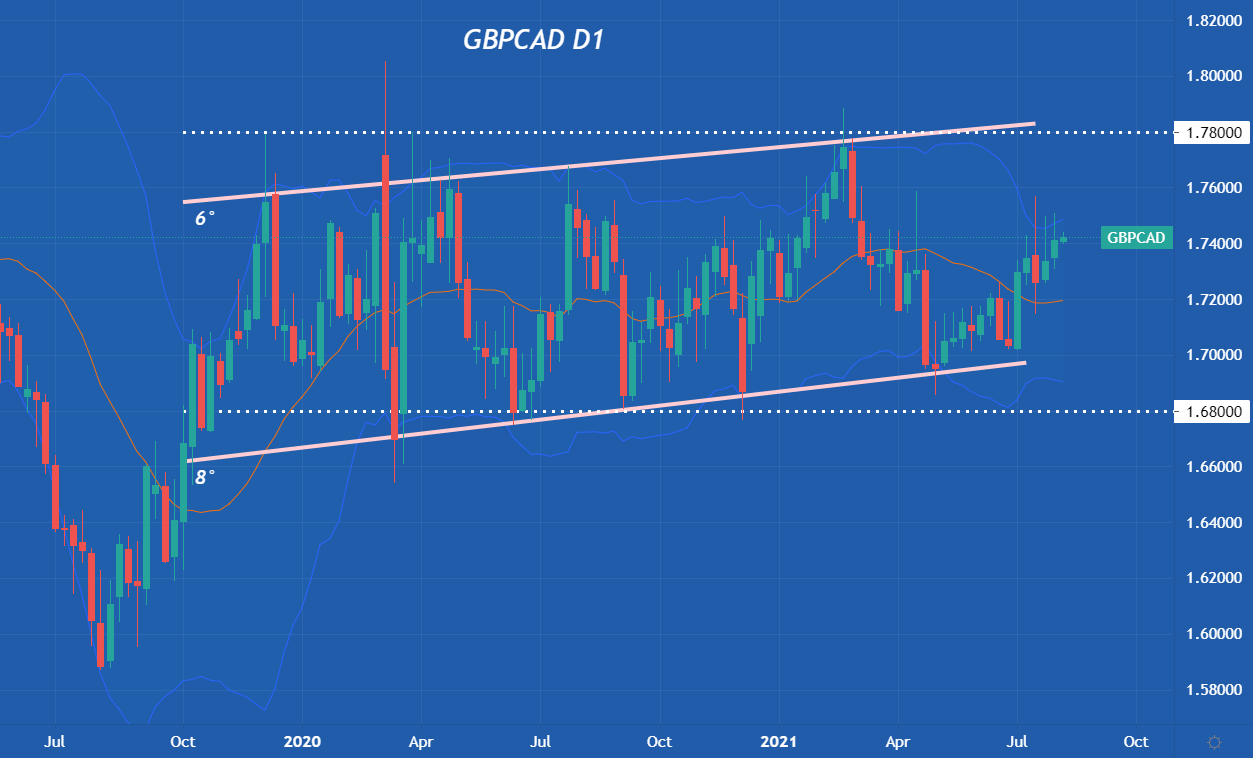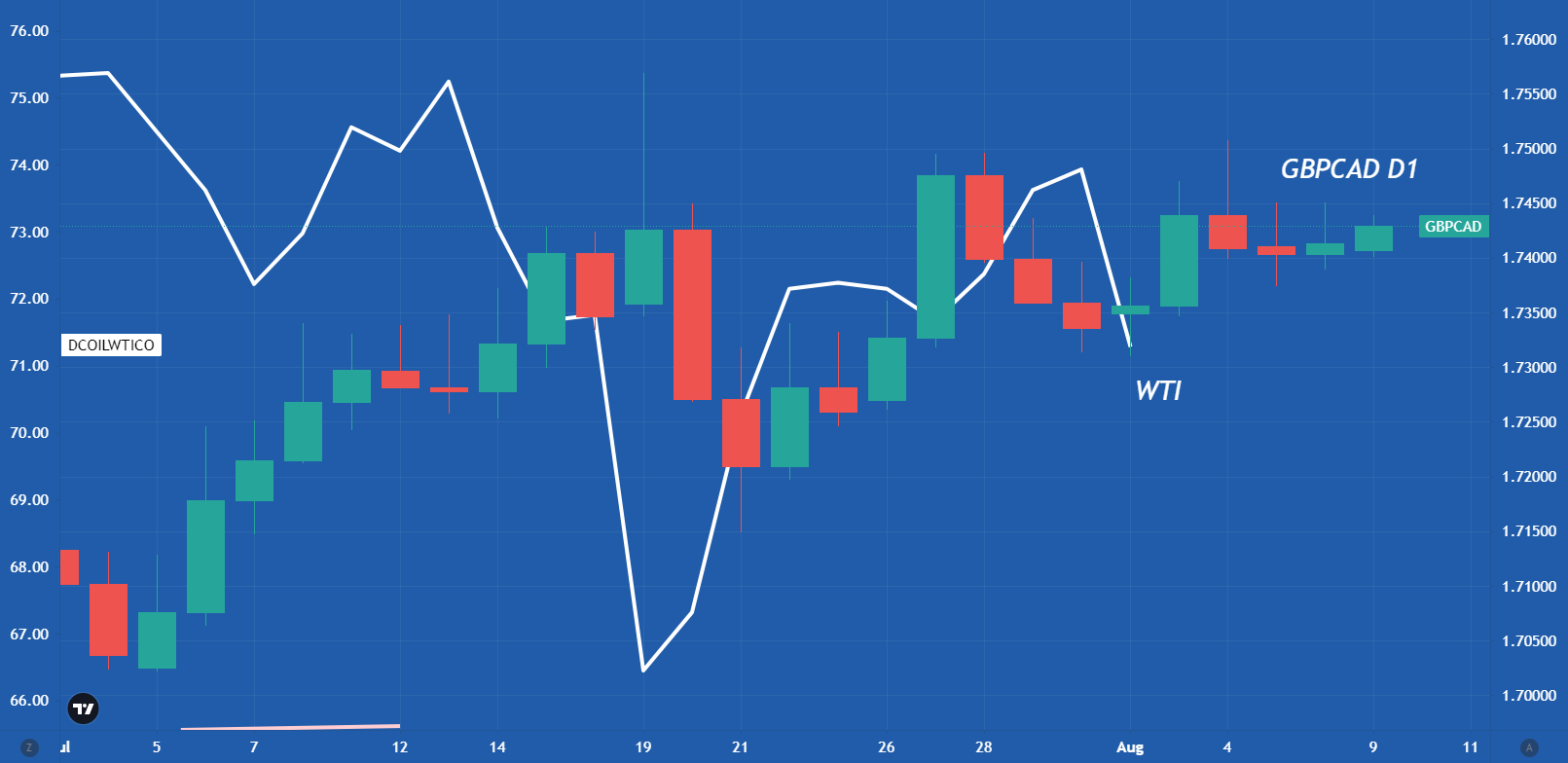If you are after a volatile currency pair to sharpen your trading skill, it is hard to look past the GBPCAD. The pair is volatile enough for opportunities to be scoped out, yet with a smaller risk factor than some other more volatile pairs like the NZDJPY or AUDJPY, where dreaded slippages are more frequent.
As shown in the above illustration, the pair hasn’t strayed far outside the 1.6800 to 1.7800 range since October 2019. However, within this range, the pair has exhibited a significant amount of volatility.
For interest: The GBP and the CAD are the third and fifth most popular currencies to trade against the USD, respectively. As a pair themselves, the GBPCAD is approximately seventieth most popular.
Fundamental perspective
Great Britain and Canada are both widely watched and widely reported upon economies. This makes keeping track of their respective economic events a little easier than some other more exotic currency pairs.
The most significant factor holding GBPCAD investors’ attention is each nation’s quantitative easing and suppressed interest rates. In particular, if, when, or how the Bank of England and the Bank of Canada change their outlook for each. While statements from the central banking institutions are typically cagey, much can be read into slippages in speech, intonation, and disagreements between key institution members.
Commodity prices
GBPCAD. Canada’s dollar is considered a commodity currency, meaning the country’s economy is heavily dependent on raw materials. Thus, its currency’s value is tied to the price of commodities. In this respect, the CAD is the second most tightly align currency with commodities. The first and third most tightly aligned currencies are the AUD and the NZD.
When commodities like oil fall, the CAD weakens, and vice versa. Of course, this is not always true, as several variables contribute to the value of a currency. But in general, the commodity rule holds, as illustrated below, with the price of the GBPCAD compared to WTI.
There is one factor that interrupts the alignment between the price movements of the GBPCAD and WTI. That is, the UK is a minor producer of crude itself. The United Kingdom producers approximately a million barrels per day. Admittedly, one million barrels is not a significant number in the grand scheme of oil production but a significant enough factor to play a part in the exchange of the GBP and CAD.
https://www.fxstreet.com/analysis/why-forex-traders-watch-the-gbpcad-202108100120
2021-08-10 01:00:00Z
CBMiUWh0dHBzOi8vd3d3LmZ4c3RyZWV0LmNvbS9hbmFseXNpcy93aHktZm9yZXgtdHJhZGVycy13YXRjaC10aGUtZ2JwY2FkLTIwMjEwODEwMDEyMNIBVWh0dHBzOi8vd3d3LmZ4c3RyZWV0LmNvbS9hbXAvYW5hbHlzaXMvd2h5LWZvcmV4LXRyYWRlcnMtd2F0Y2gtdGhlLWdicGNhZC0yMDIxMDgxMDAxMjA
Bagikan Berita Ini
















0 Response to "Why Forex traders watch the GBPCAD? - FXStreet"
Post a Comment